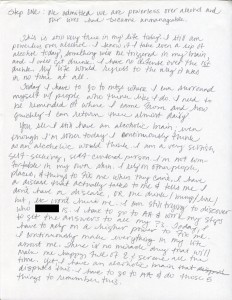Book: Every Cradle Is a Grave: Rethinking the Ethics of Birth and Suicide
Author: Sarah Perry
Type of Book: Non-fiction, philosophy
Why Do I Consider This Book Odd: Pretty self-explanatory.
Availability: Published by Nine Banded Books, you can get a copy here:
You can also order a copy directly from the publisher.
Comments: Sarah Perry wrote this book from a place of philosophical intellectualism and factual integrity. She exhaustively researched the hows and whys of suicide and procreation and makes a very compelling case for making suicide accessible for people who do not want to live and for considering whether or not it is ethical to continue to create new humans whose lives may be more a burden to them than a gift. As she deftly picks apart the arguments against suicide and antinatalism, she bestows upon mankind a dignity and respect for self that anti-suicide and pro-birth crusaders deny us as we are asked to suffer and to mindlessly recreate ourselves because of tyrannies of tradition and religious mores.
I very much want to discuss this book in a bloodless manner because the subject matter is so fraught with emotional reaction, much of it knee-jerk, that makes the topic hard to discuss in an intelligent way. When you speak to people whose loved ones killed themselves, you hear them speak of the cowardice and selfishness of suicide. When you talk of people who did not have children, you all too often hear others dismiss ethical childlessness as selfish, or insist that if only one had a child, one would know, really know, what true love means. To approach a counter to such topics with emotion is pissing in the wind because the very basis for avoiding suicide and encouraging procreation is steeped in emotion.
But given my personal history and recent events in my life, I can only approach these topics – especially suicide – from a place of emotion and personal anecdote. I hope that as I write from my id I do this topic justice. This book really is a paradigm changer, and you don’t have to adopt an antinatalist world view for that to happen. It is a book that argues against some of the most deeply ingrained habits of human existence – to remain living at all costs and to spread one’s seed far and wide – and it makes the case that our reason and self-awareness are not entirely a great gift and that possession of them should permit us to control how we decide to die rather than be used as a manipulative tool to keep us living.
And there is no way to discuss the entirety of this book. Know that I will be unable to discuss large amounts of this book and that you need to read it yourself. All I can do is discuss what I experienced when reading this book and how it relates to my life.

